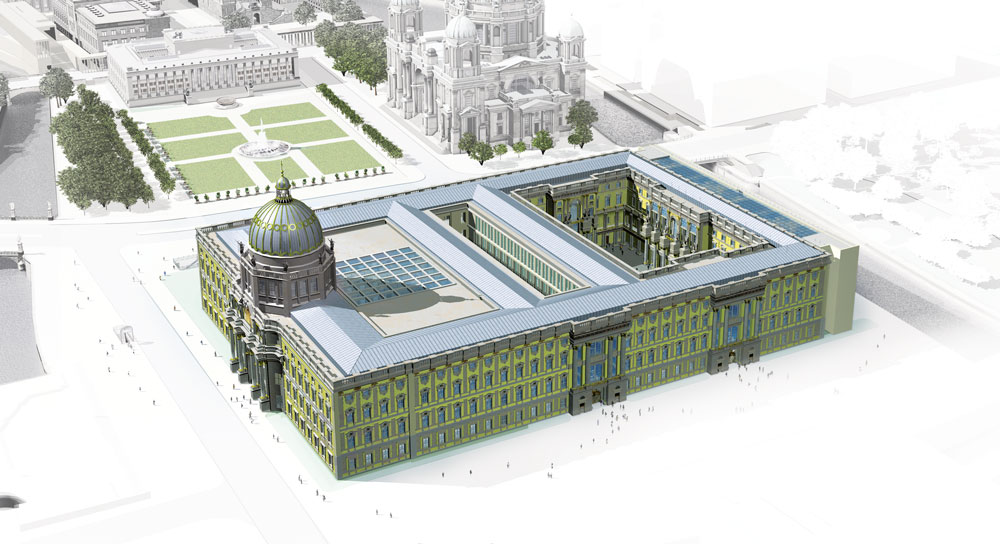You can also view the façade catalogue in this way – and secure with your donation an individual façade element tailored specifically to you.
Naturally, you can also pose any specific questions you may have to us directly and we’ll gladly give you a personal answer.
Before doing so, however, take advantage of the Berlin Palace search facility (top right on the homepage), which will take you straight to what you’re looking for and possibly provide you with the answer you want without having to make a separate enquiry to us. We have, in fact, given our position on every important issue in the different sections of this website.
The summary below provides you with some initial, quick information:
The reconstruction of Berlin Palace as the Humboldt Forum began on 21st June, 2012. The recreation of the palace’s façades will see the historic centre of Berlin finally restored to its former glory. In order to make the upheavals of history visible, the palace is not being reproduced in every last detail as it used to be, but with the modern architecture of its new east façade in keeping with our era as well. Its indiscriminate destruction in the 1950 is thus designed to remain visible. The German parliament wanted it this way, passing multiple resolutions to this effect, and it is now being implemented by the German government. As a result of the plans of the team of architects, further historic architectural details, over and above what was resolved by the government, have become possible: three Eosander Courtyard portals, for example, the historic stairwells in the Schlüter Courtyard and finally the dome. It will then be seen to what extent the reconstructions that are additionally now possible within this sum can be achieved.
In an international architecture competition the Italian Professor Franco Stella was awarded first prize in late 2008. His design carefully implements the directives of the German parliament. After the German competition regulator had responded to a protest about the award of the commission to Stella by declaring it null and void, his contract was confirmed by the Dusseldorf Regional Court of Appeal on 2nd December, 2009. On 30th December, 2009, Stella was then given a new, now undisputed, legally valid architect’s contract. During this period of limbo, the planning for the construction carried on, so it didn’t cause any delays.
In 2009, the German government set up the Berlin Palace – Humboldt Forum Foundation, which began its work that November, chaired by Manfred Rettig.
Like us, it is a not-for-profit organisation and took over from us the building plans for the palace façades and the façade models made at our bidding, being around 40% of the total volume needed. This represents an equivalent value of over €10 million. We also transferred to the foundation monetary funds in the high tens of millions.
The foundation’s chairman, Manfred Rettig, was previously head of the Federal Construction Company and played a major role relocating the parliament and government from Bonn to Berlin. His trademark: the relocation was completed almost a year ahead of schedule – and the costs were less than projected. The same will be case with the building of Berlin Palace. The foundation operates on a professional basis and as additional, highly competent support for tendering processes and building control has at its side the Federal Office for Building and Regional Planning (BBR), which for many a year has been responsible for practically all federal buildings.
 Deutsch
Deutsch English
English Francais
Francais






